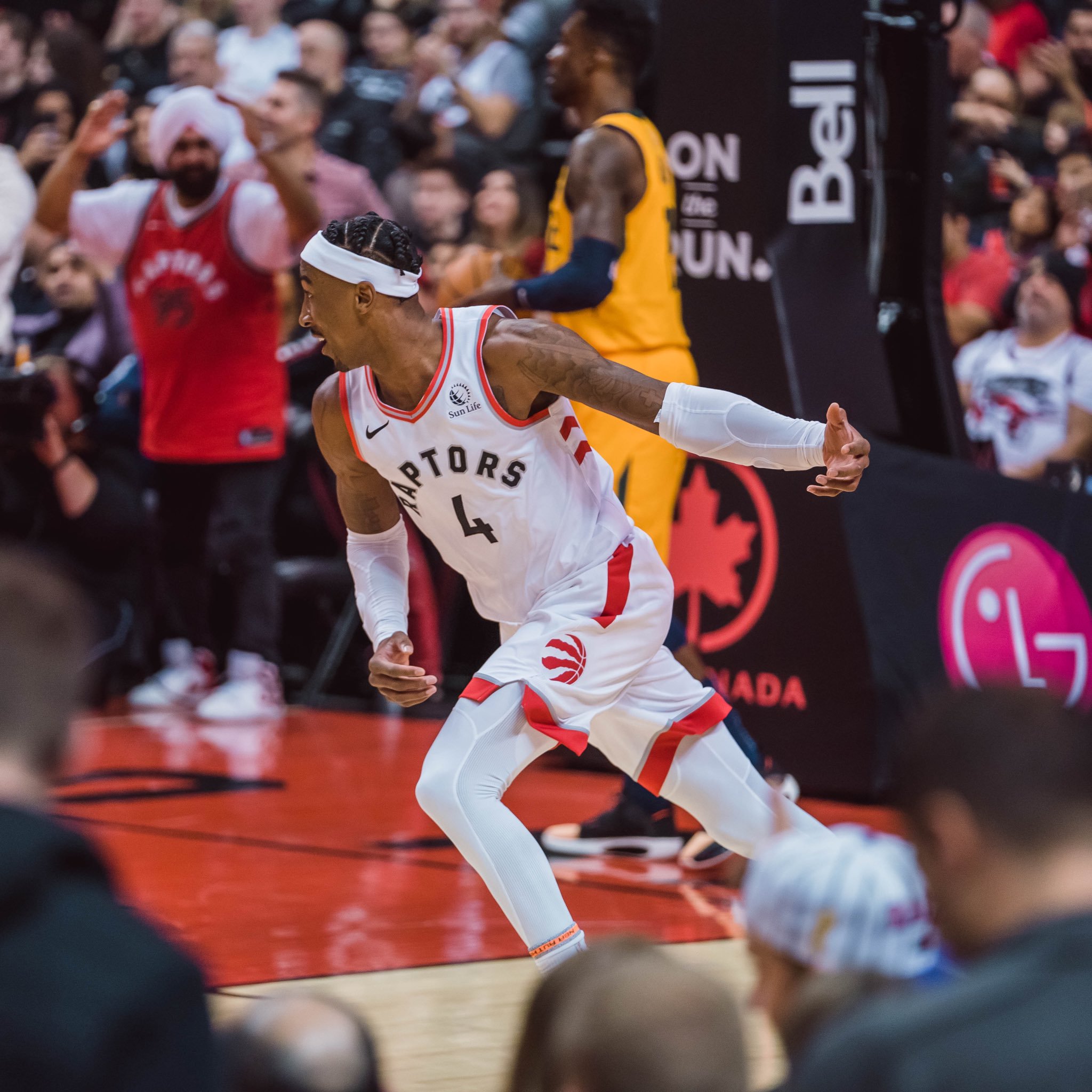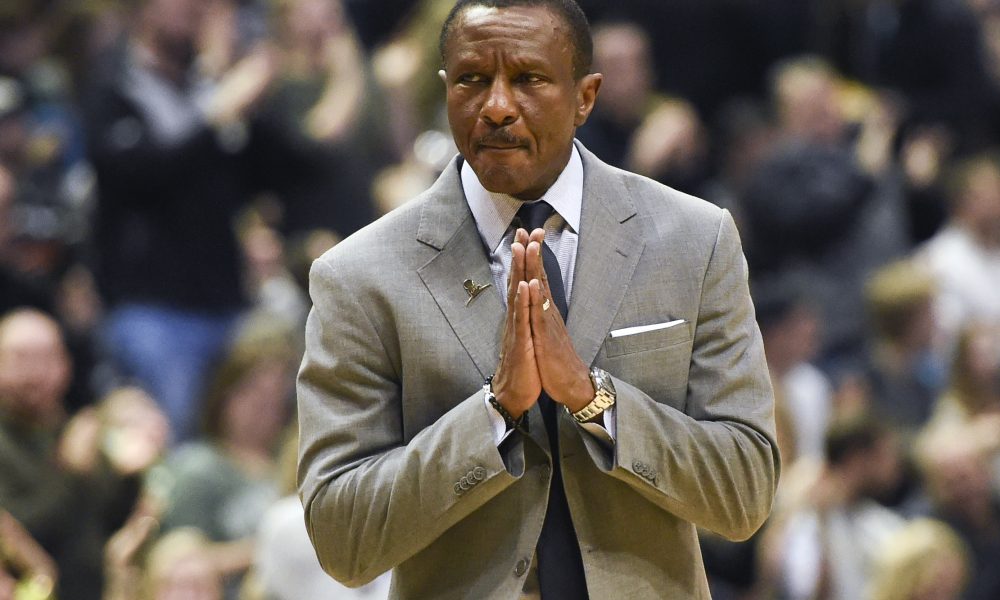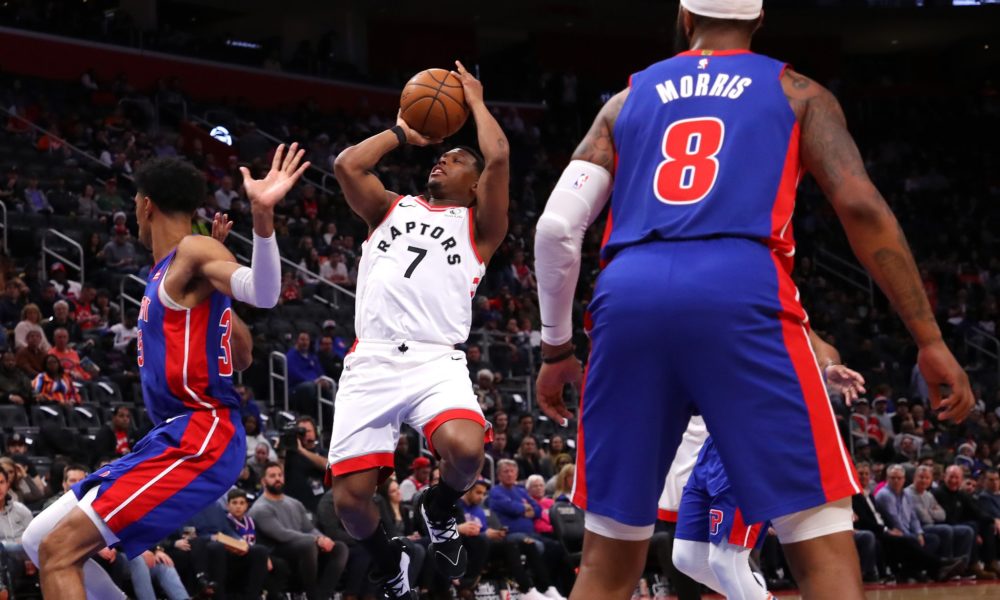Fairy tales almost by definition have an unhappy ending. Whether it’s turning into a pumpkin, getting eaten by a wolf pretending to be your grandmother, or waking to the presence of three angry bears, the titular characters always seem to fall back to reality. Life, fast, etcetera.
Rondae Hollis-Jefferson once appeared to be something of a fairy tale player for the Toronto Raptors. When Hollis-Jefferson was signed to a one-year deal in the off-season, it was for pennies on the dollar, at $2.5 M. Then before the year, Nick Nurse criticized his, and others’, efforts in preparing for the season. It was unclear that Hollis-Jefferson would have a role to play in Toronto, and during the month of October, he didn’t.
Then in mid-November, Toronto lost Serge Ibaka to injury. Hollis-Jefferson played his first real minutes of the year against the Los Angeles Lakers and quite quickly missed a layup, hit a jumpshot, committed an offensive foul, and assisted Fred VanVleet for a layup of his own. Not everything he did was good, but he did so much that it didn’t really matter. Hollis-Jefferson offers instant energy, raising his teammates’ play to his own level by sheer virtue of his intensity. Short Ibaka and then Kyle Lowry, Toronto needed a boost, and Hollis-Jefferson provided.
Over the course of the next few weeks, Hollis-Jefferson entrenched himself in the Raptors’ lineup. He notched double-doubles in important wins over the Portland Trailblazers and Philadelphia 76ers. He averaged, over the course of November, 10.5 points and 6.9 rebounds while shooting 56.8 percent from the field. He had the third-highest plus-minus on the team. He played 24.2 minutes per game and was integral in Toronto surviving without Lowry and Ibaka.
Some things Hollis-Jefferson did were expected. He has been a defensive powerhouse for Toronto, and he seems to manufacture at least one basket per game out of absolutely nothing.
Some things Hollis-Jefferson did were completely unexpected. He has shot six-of-seven out of post-ups this year, per nba dot com’s tracking data. Some of his makes have been almost comically outside of his expected skill-set.
By late November, when media asked Nurse about what Hollis-Jefferson brought to the team, Nurse didn’t mention energy or defense or effort, but he gave a pretty solid accounting of Hollis-Jefferson’s larger importance on the floor: “He’s just a really good player.”
Because of Hollis-Jefferson’s play, it was fair to ask what would happen when Serge Ibaka returned to the rotation. Hollis-Jefferson didn’t naturally play center, like Ibaka, but Toronto had been platooning the back-up center position without Ibaka, giving Pascal Siakam, Chris Boucher, and Hollis-Jefferson run together. Hollis-Jefferson can guard virtually any player on the defensive end, which makes it easier to slot him alongside funky lineups. When Nick Nurse was asked whether Hollis-Jefferson would stick in the rotation on December 1, as Ibaka returned to the rotation, he didn’t hesitate in his praise.
“Well, Rondae’s in,” he said.
Then, since December 1, Hollis-Jefferson’s role has become less clear. His minutes fell as Toronto began losing games. His patented energy didn’t seem to be enough, as he notched only one game in double-figure scoring since Lowry and Ibaka returned to health.
There are important caveats to that fact. Nick Nurse disclosed after Hollis-Jefferson didn’t play a minute against the Cleveland Cavaliers that he had a tweaked groin or hamstring, and his health was iffy. It’s possible that he’s played less, and been less effective, because of an injury, and as he returns to health, his playing time and effectiveness will skyrocket again. Still, Nurse framed Hollis-Jefferson’s absence in the context of Boucher’s growth.
“Just enough of a reason to let me go ahead and let Chris [Boucher] run out there,” Nurse said of Hollis-Jefferson’s absence. “I’d really like to find a role for Chris. I think he has played with great energy and he seems to always block a shot or make a three as soon as he steps on the floor or when he steps on the floor. Again, I’d like to find a chance to play him a little more if I can. We’ll see how I can figure that out coming up.”
Has Nurse’s tune changed when it comes to Hollis-Jefferson’s inclusion in the rotation?
In addition to Hollis-Jefferson’s tweak, there have been structural issues to his play during December that have nothing to do with injury, He has begun playing outside his role, at times.
It turns out, with Ibaka and Lowry back on the floor as finishers and initiators, Hollis-Jefferson’s role on the floor can only be quite limited. Because he’s not going to one of Toronto’s best creators, he has to be used off-ball. But because he’s such a poor shooter, he can really only be placed in the dunker spot or as the screener. When Hollis-Jefferson can’t get any time as the center, with Marc Gasol and Ibaka firmly above him on the depth chart there, it’s easy for a player like Hollis-Jefferson to cap Toronto’s offensive ceiling with their lineups such as they are.
Watch that clip again of his missed triple. He actually begins in the dunker spot before Siakam waves him outside of the arc so Siakam can get a post touch. But Hollis-Jefferson can’t make the post entry because his defender sinks so low. He is forced to take the jumper or concede the battle and toss the ball to the other side of the floor with little time left on the clock. Either way, it’s a win for the defense. Hollis-Jefferson was playing in his role, but a fairly simple defensive maneuver forced him outside, and the Raptors’ offense suffered merely as a result of his presence.
That’s the problem when a player only fits in such a limited role. He can be easily forced outside of his job by a smart defense. And then what can he offer the offense?
Hollis-Jefferson offers enough on the defensive end that he is still a net positive on the floor. He can disrupt even the best-laid plans, and for Toronto to have a player on the bench whom they trust against opponents’ star wings is a huge benefit. Toronto will need Hollis-Jefferson in some games, but it’s not clear that he will be included in all games going forward. The Raptors have a huge number of players who are net positives, so Hollis-Jefferson’s limitations are possibly more important predictors of his playing time than his strengths.
Despite these criticisms, it’s possible that we should have expected Hollis-Jefferson to have become a rotation player far sooner than he did. Coming from the Brooklyn Nets, he was a useful young player on a playoff team, and it was surprising that he couldn’t command a larger salary. That he is not a shooter perhaps limited his market, but he has always been a positive player. The Nets were almost always a better team with Hollis-Jefferson on the floor than with him on the bench, especially defensively.
On first glance, Hollis-Jefferson’s meteoric rise in early November may appear to have been a fairy tale stretch both for him and the Raptors. A sudden demise would seal the case. But it’s not at all clear that such is Hollis-Jefferson’s fate. Hollis-Jefferson could represent the classic fairy tale trope of a mortal who’s lifted above his station, falls to reality, and then discovers he had the magic inside him all along. He is a supremely talented defender who finds ways to be a net positive on the offensive end. There are always important roles for such players in the NBA, and Nurse and staff are creative and experimental enough to find ways to blend Hollis-Jefferson more seamlessly into more and varied lineups. It’s possible that Hollis-Jefferson’s midnight tolled when Lowry and Ibaka returned to the floor, but that doesn’t have to be the case. Hollis-Jefferson is still writing the end to his own Raptors’ story.




